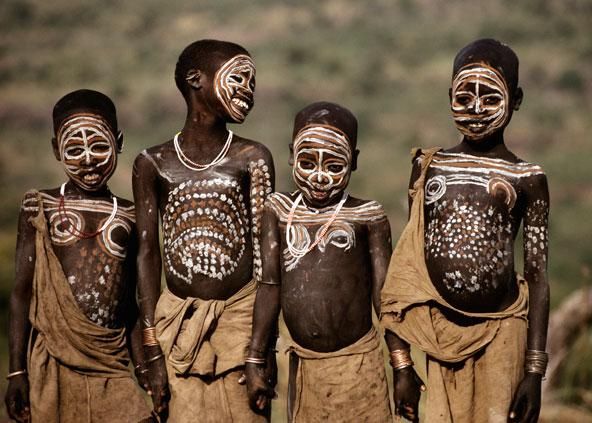Five African tribes you may not know about!
Africa is the second-largest and second-most-populous continent in the world. As an incredibly diverse continent, there are so many different cultures and ethnic groups that call it home. Each of these tribes has its unique way of life, traditions, and rituals that are deeply tied to its history and environment. While some tribes in Africa are well-known, many others remain hidden gems, preserving unique traditions, customs, and ways of life. In this blog post, we will be exploring five intriguing African tribes that you may not have heard of before.

The Himba People of Namibia
The Himba people are an indigenous tribe living in the arid landscapes of northwestern Namibia. What sets the Himba apart is their striking appearance and traditional way of life.

They are renowned for their distinct reddish-brown skin, which is achieved by applying a mixture of ochre, butterfat, and herbs to their bodies. The Himba are pastoralists, primarily relying on cattle farming. Cattle are considered a wealth symbol and central to their social structure. Himba communities are closely knit, and they practice polygamy, with men often having multiple wives.

The Hamar People of Ethiopia
The Hamar people are an indigenous group in southwestern Ethiopia known for their unique cultural practices and traditional way of life. They primarily rely on herding and farming for their livelihood.

A well-known tradition is their bull-jumping ceremony, marking a rite of passage for young men, and their whipping ceremony for women to support their male relatives. The women tease and entice the men to whip them; this is a sign of love and loyalty to their male relatives. The Hamar people are recognised by their distinctive attire, hairstyles, and body adornments.

The San People of Southern Africa
The San, also known as Bushmen, are one of the most ancient tribes in Africa, with a history dating back tens of thousands of years. They inhabit the Kalahari Desert regions of Namibia, Botswana, and South Africa.

The San people are renowned for their exceptional tracking skills and intimate knowledge of the natural world. They lead a hunter-gatherer lifestyle, using bows and arrows to hunt game and gather edible plants. The San’s unique click language, which includes various click sounds, is one of the most distinctive features of their culture.

The Dogon Tribe of Mali
Nestled in the rugged cliffs and plateaus of Mali’s Bandiagara Escarpment, the Dogon people have a remarkable culture and mythology. The Dogon are known for their detailed knowledge of the cosmos and are often associated with the mystery surrounding their astronomical beliefs.

Their oral tradition includes a sophisticated understanding of celestial bodies, including the Sirius star system. They have a strong sense of community and live in multi-story houses made from mud and rock. The Dogon people connect deeply to their spiritual beliefs and ancestral rituals.

The Mursi Tribe of Ethiopia
The Mursi are an indigenous ethnic group living in southwestern Ethiopia. What makes them stand out is their practice of wearing large, ornate lip plates and the unique scarification patterns on their bodies.

The Mursi women, like the Surma, pierce and stretch their lower lips to accommodate clay plates. The size of the plate is indicative of a woman’s social status. Scarification is another distinctive feature, with intricate patterns carved onto the body. The Mursi are primarily pastoralists, relying on cattle for sustenance, and their isolated way of life has helped preserve their cultural practices.

By taking the time to learn about these African tribes, we can not only appreciate the incredible cultural richness of our world but also gain a renewed appreciation for the importance of preserving and respecting these unique customs.







